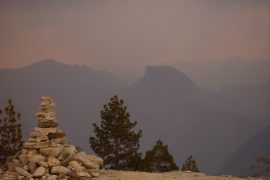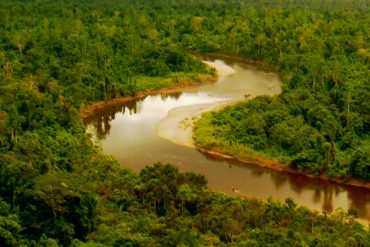The Evil Weeds
When conservation and Christianity intersect it’s usually framed as “Creation Care.” I’m a big fan of the Creation Care movement and the idea that the good Lord wants us to care about all his works, but as a conservation biologist I sometimes find myself moved to prod folks into doing a little more than just caring. Northern long-eared bats, fat pocketbook mussels, and Braun’s rockcress will need actual help if they are going to hang around for any longer. By action I don’t just mean attending environmentalist meetings or advocating for legal protection of endangered species or anything like that—although these things certainly have their value. Many of our most imperiled species need direct action now, today, or at least by next weekend. The fact is conservation isn’t just about caring or discussing or even educating or advocating—it’s about getting dirty. Really dirty. And scratched and hot and itchy and possibly even stung and bitten. It’s about killing weeds and busting up dams and even trapping and relocating animals. And usually doing all of that on a ridiculously large scale, a lot bigger than your backyard or even your city, county, or state. But your backyard is a good place to start.
We’ve all heard the parable of the sower (Matthew 13:1-9, 18-23). Evil weeds grow with good wheat and we’re instructed to let them grow together until harvest time when we separate them and burn up the weeds. For the sake of argument, let’s ignore that it’s a parable and take it at face value. Most conservation biologists would not recommend letting weeds (which we usually call “invasive species” nowadays when they are in a natural area) grow until harvest time before dealing with them. A couple of thousand years ago a “weed” was often a very localized native plant that just grew with the crops and competed for a little water and nutrients. Pulling and burning them at maturity probably controlled the problem pretty well for the next season. But fast forward a couple of millennia and weeds are a little different. Instead of a local species inching into your field, you’re facing a species imported from across the globe that can grow several feet a day like kudzu or Japanese honeysuckle, or produce hundreds (if not thousands) of seeds in each seedhead, like Japanese stiltgrass or garlic mustard. The native species haven’t had time to evolve any defense for these prolific growers and are crowded out while the newcomers hog all the resources. If you wait until harvest time to deal with them you’ve probably waited too late to prevent an overwhelming infestation that could take a mind-boggling amount of effort, funds, and herbicide to control. When it comes to problems facing endangered species and natural habitats, invasive species impacts are right up there with all other forms of habitat loss generally associated with bulldozers. You can’t wait until harvest time; those evil weeds need to go now.
There is no shortage of invasive species information on the internet, way too much to get into here. In fact, there is so much information that it’s kind of intimidating—however, if you are so inclined a great place to start is www.invasivespeciesinfo.gov—as there are so many non-native species found in the US, with many exhibiting invasive characteristics. For instance, in my home state of Kentucky there are about 2,600 plants found in natural areas, such as woodlands and grasslands, and 570 of them are considered non-natives, mostly imported from Europe or Asia.[ref]Ronald Jones, Plant Life of Kentucky: An Illustrated Guide to the Vascular Flora (Lexington: University Press of Kentucky, 2005), 11.[/ref] The Kentucky Exotic Pest Plant Council considers nearly 200 of the non-natives to be invasive to some degree, meaning they don’t just stay put in your garden like most flowers but instead spread in natural areas like, well, evil weeds. That’s just the plants. There are also European starlings, zebra mussels, Hemlock wooly adelgids, silver carp, Burmese pythons, nutria, and dozens of other critters that have set up shop in the U.S. and put the hurt on the indigenous species.
The Good Seed
So what’s a good Christian response to all this that also fits with established conservation biology practices? I think it’s actually pretty simple. Just plant more good seed. Milkweed, phlox, spicebush—whatever is native to your neck of the woods. In your backyard, on your church grounds, at your summer camp, at your local park or nature preserve. First find out what weeds are the worst in your area from your local pest plant council and get rid of them. Not necessarily every non-native species, just the bullies. Next contact your local native plant society and find out what plants not only should naturally occur in your area but also provide good habitat for critters, be they birds or bees, and plant them. It’s that simple. At least, the concept is simple. It’s going to take a lot of blood and sweat to do it; just ask any landscaper or farmer how easy it is to kill the evil weeds and get the good seeds to grow. You probably aren’t going to single-handedly rescue any species from extinction. But that milkweed in your yard where the wintercreeper used to be might just give a couple of monarch butterflies a place to lay their eggs and survive one more generation. To me that’s what caring for Creation is all about: doing your part in the face of overwhelming odds to make your corner of God’s green Earth just a little bit better for the rest of creation.





